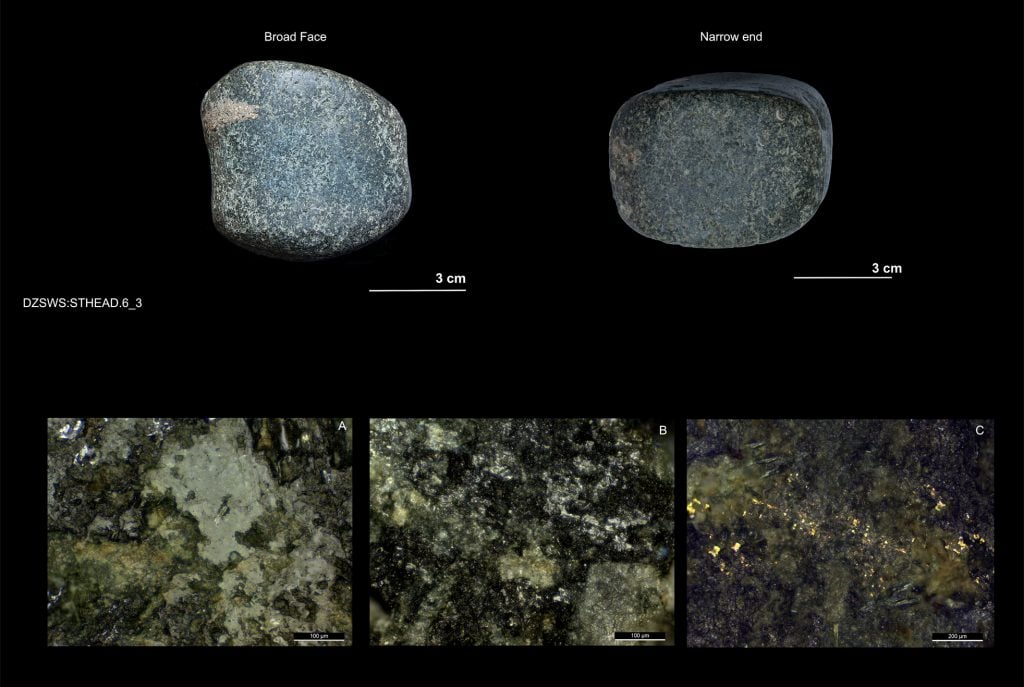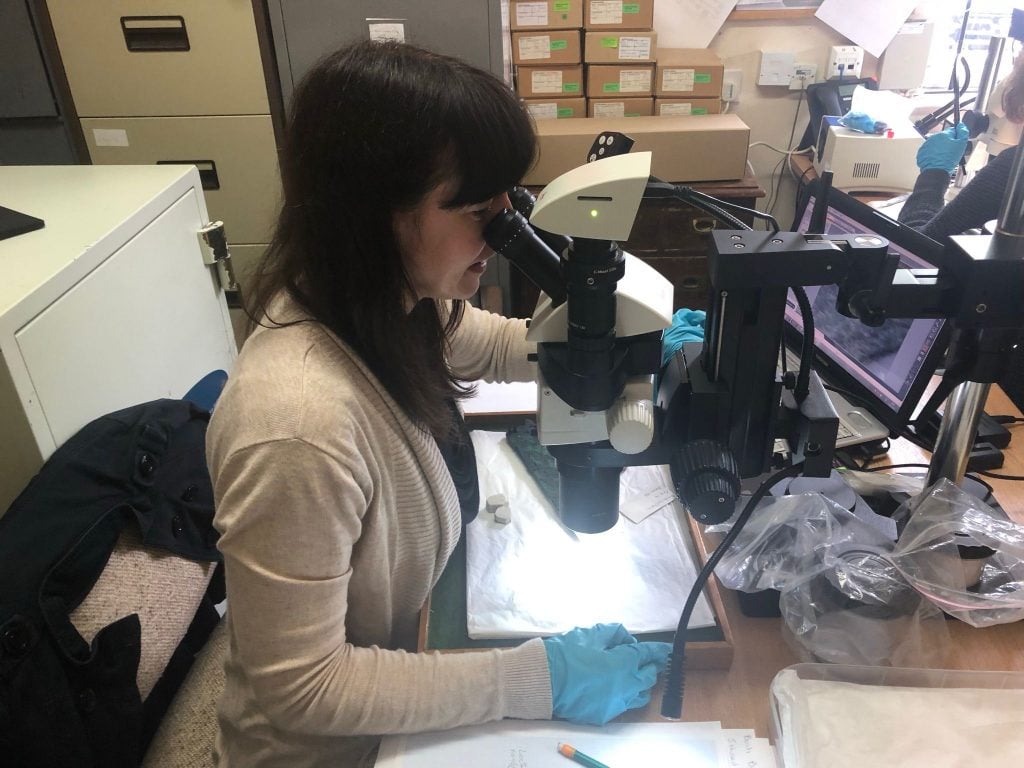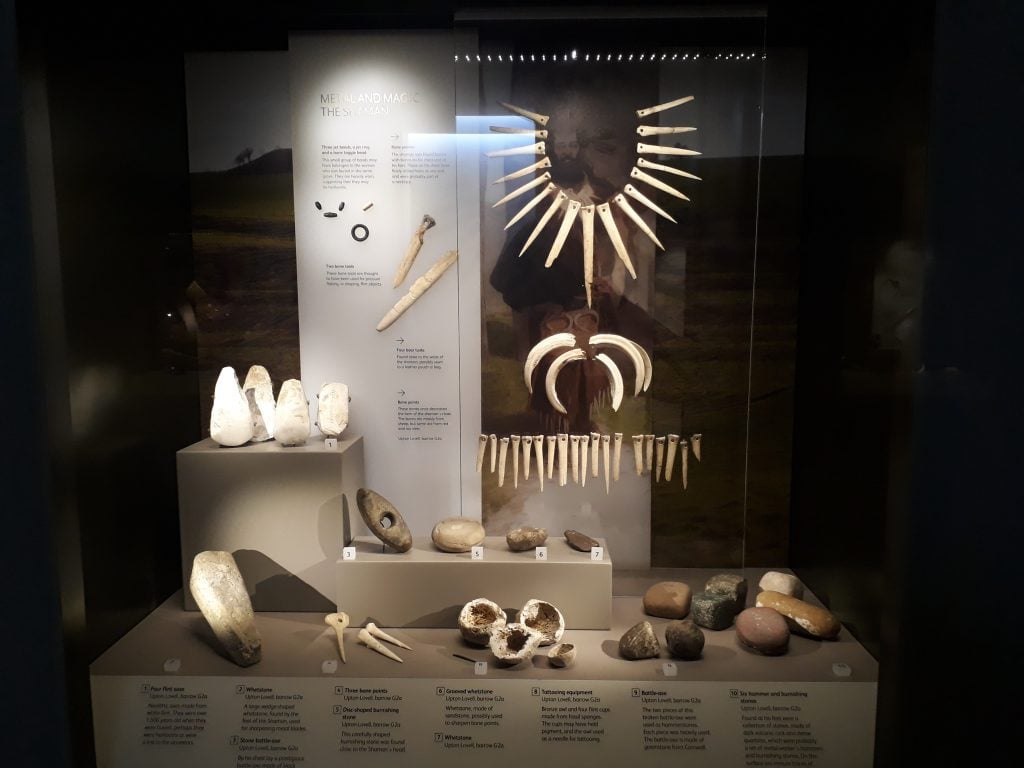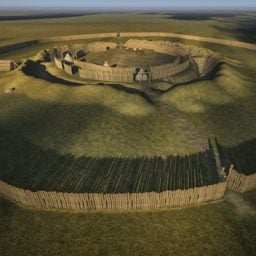Archaeologists at the University of Leicester have just re-examined five 4,000-year-old tools like flint cups and Neolithic axes that have puzzled experts since their discovery 220 years ago in a Bronze-Age burial near Stonehenge. Four were examined for the first time.
Based on the bones, cups, and cobbles surrounding two bodies at the grave—most recently dated 1850–1700 B.C.E.—researchers have hypothesized over the past century that these grave goods belonged to a costumed shaman, or a goldsmith of status.
Applying contemporary technologies including microwear analysis and scanning electron microscopy to the tools’ surfaces, researchers have revealed their owner was more likely a gold worker who coaxed the precious metal into sheets to gild other items.

Stone tools, with accompanying analysis. Courtesy of the University of Leicester.
“Advancing a new materialist approach, we identify a goldworking toolkit, linking gold, stone, and copper objects within a chaîne opératoire,” the team wrote in their study, adding that “modern categorizations of these materials miss much of their complexity.” New materialism re-centers understandings of what discovered artifacts did relationally, rather than through their fixed properties.
Dr. Colin Shell first detected gold traces on these tools in the early 2000s. Under the Beyond the Three Age System project, meant to fortify new materialism, Dr. Christina Tsoraki conducted new wear analysis of the tools at their current home—on display at the Wiltshire Museum in Devizes, close to where archeologists first found the stone and copper alloy toolkit.
Tsoraki recruited Dr. Chris Standish, an expert in early Bronze Age gold working from the University of Southampton, to re-examine the gold residues she found on the tools’ surfaces upon realizing they’d been used for different purposes, applied with different hand motions. Some bore the marks of hammering, while others were used for smoothing.
The two employed a scanning electron microscope and an energy dispersive spectrometer to date the residues. Their elemental signatures matched Bronze Age gold work.

Researchers analyzing the tools. Courtesy of the University of Leicester.
“New research has identified a further four stone objects with gold on their surfaces and characteristic wear traces, linking a wider suite of items from the burial to the gold working process,” a statement from the University of Leicester said.
Now they know a grooved abrading tool once scoured bronze as well as gold. Dull axe heads were repurposed to crush pigments. Flint nodule cups mixed resins, and “the copper-alloy awl was used with compressive force against a material of medium hardness,” according to the study. Some tools were even used to keep other tools in working order.
“This helps us understand the highly skilled processes involved in making gold objects in the Bronze Age, and shows the continuing importance of museum collections,” said Dr. Oliver Harris, who leads Beyond the Three Age System.
Wiltshire Museum curator Lisa Brown added that the central enigma’s “ceremonial cloak decorated with pierced animal bones, also hints that he was a spiritual leader, and one of the few people in the early Bronze Age who understood the magic of metalworking.”
Maybe a shaman and a gold worker were never that different.











